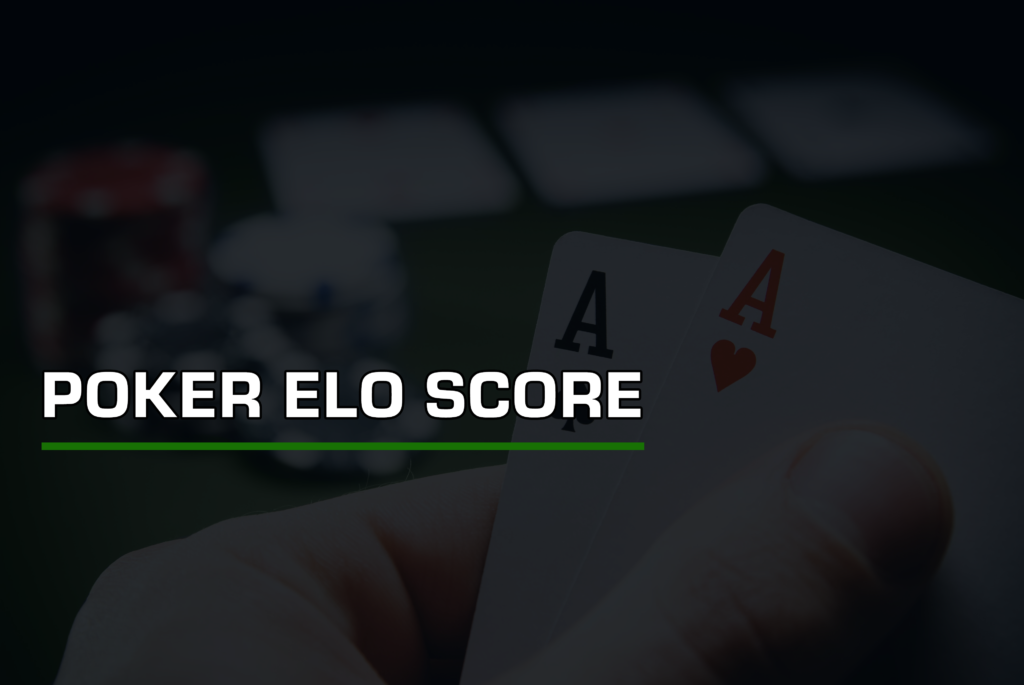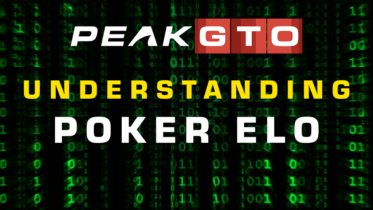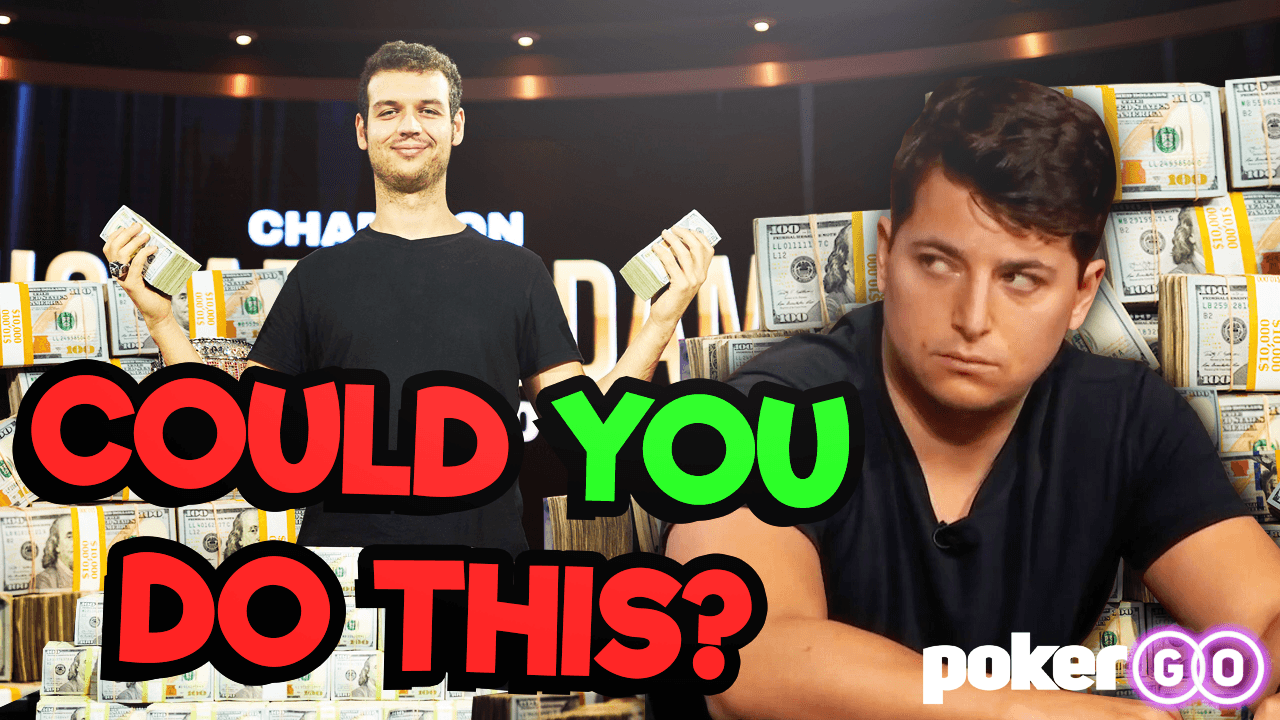The PeakGTO Poker ELO rating system was designed to help players track their progress and get motivated to improve their gameplay, ultimately aiming to master the perfect GTO (Game Theory Optimal) strategy.
This unique ELO-based system was adapted for poker, where every hand is an opportunity for the player to earn or lose points based on the quality of their decisions, helping them identify areas for improvement.
Similar to the chess ELO system, the PeakGTO poker ELO score is not an absolute measure of skill but reflects relative performance based on expected outcomes. Let’s dive into how this system evaluates your gameplay and how your rating is adjusted after each action.

PeakGTO uses an adapted ELO system to evaluate the player’s performance and results when playing against the Trainer. This system uses a complex yet effective formula that aligns with the unique nature of poker decision-making and gameplay.
Just like ELO in chess, the adapted poker ELO rating is not a measure of the player’s absolute strength. It is designed to adjust the player’s rating after every decision by comparing their performance against expected outcomes.
The Poker ELO formula used by PeakGTO is: E’ = E + B + EMC, where:
- E: Current ELO rating of player A before the action.
- E’: New ELO rating of player A after the action.
- B: Best answer factor
- EMC: Expected mistake calculation
The first two items are self-explanatory. E is the rating that you have currently, while E’ is the resulting rating, which is calculated based on the formula. The other two are key ingredients, and we’ll now explain them in more detail.
Expected Mistake Calculation
Of the two elements in the rating formula, the EMC carries the most weight because it determines how costly a mistake is to the player’s ELO rating. To accomplish this, it uses the following formula:
EMC = [-K x (Mev – Aev)], where:
- K: Scaling factor, possibly dynamic based on current ranking
- Mev: Max EV of the best answer
- Aev: Actual EV of the chosen answer
‘K’ is a scaling factor that depends on the player’s rating to start the hand. This means that a higher-rated player can receive a bigger penalty for an error than a lower-rated one. This is a foundation of ELO-based systems, which take into account the player’s expected skill level when determining the impact of a particular outcome, whether the result of the game (in chess) or the expected outcome of a decision (in poker).
‘Mev’ stands for the maximum EV of the best answer, i.e., the highest expected value of the best GTO play, while ‘Aev’ is the expected value of the decision selected by the player.
For example, if you have three options to choose from, where:
- Raising has the expected value of 2bb
- Folding always has an EV of 0bb
- Calling has the expected value of 0
Raising is the best option, as it yields the best value. If you choose to call instead, your EMC would be:
- EMC = -Kx(2-0)
As explained previously, ‘K’ is a scaling factor, so it will change as your rating increases or declines.
It is worth noting that the score also depends on the action’s frequency. For example:
- Actions with frequency > 15% receive no EMC penalty
- Actions with frequency 5-15% get a capped -5 penalty instead of the tier-based WAF
EMC Max Impact
The Expected Mistake Calculation Max Impact is a number introduced to the system to prevent one mistake from tanking a player’s ELO rating.
The formula to calculate the Max Impact is:
If EMC > WAF, Then EMCmax, else EMC, where
- WAF – Worst Answer Factor, determined by the current rating
- EMCmax – The maximum value of the expected mistake calculation
This system accounts for the player’s current rating, ensuring that a single mistake doesn’t have a significant impact on their overall score. The table for the Worst Answer Factor by different ELO scores is shown below.
| Score | Worst Answer Factor | ||
| Points Added | |||
| Super Pro | 2800 | infinity | -100 |
| Endboss | 2500 | 2799 | -75 |
| Master | 2200 | 2499 | -50 |
| Expert | 2000 | 2199 | -50 |
| Pro | 1800 | 1999 | -30 |
| Shark | 1400 | 1799 | -25 |
| Student | 1000 | 1399 | -20 |
| Recreational | 700 | 999 | -20 |
| Novice | 400 | 699 | -20 |
| Noob | 0 | 399 | -20 |
The Best Answer Factor
The second key element in the Poker ELO formula is the Best Answer Factor, marked by the letter ‘B.’ It plays a smaller role in the overall calculation, but it exists to reward the player for making the best (the most +EV) decision in the given situation.
Like the EMC Max Impact, the Best Answer Factor is also affected by the player’s rating at the start of the hand, with lower-rated players getting more points for picking the best option.
This makes sense within the system, as a low-rated player isn’t expected to offer as many best picks as a high-rated one, and as they move up, the Best Answer Factor declines.
| Score | Best Answer Factor | ||
| Points Added | |||
| Super Pro | 2800 | infinity | 2 |
| Endboss | 2500 | 2799 | 2 |
| Master | 2200 | 2499 | 2 |
| Expert | 2000 | 2199 | 3 |
| Pro | 1800 | 1999 | 4 |
| Shark | 1400 | 1799 | 6 |
| Student | 1000 | 1399 | 8 |
| Recreational | 700 | 999 | 8 |
| Novice | 400 | 699 | 8 |
| Noob | 0 | 399 | 10 |

PeakGTO’s Poker ELO rating system provides a dynamic way to evaluate players’ skill by comparing their decisions against optimal Game Theory Optimal (GTO) play. The system leverages the Expected Mistake Calculation (EMC) and the Best Answer Factor (B) to adjust ratings after each action, ensuring fair progression based on the quality of decisions.
With safeguards like EMC Max Impact, it prevents drastic drops due to single errors, encouraging steady improvement. Overall, this ELO-based approach provides players with a clear, motivating path to track their development and refine their poker strategies.





